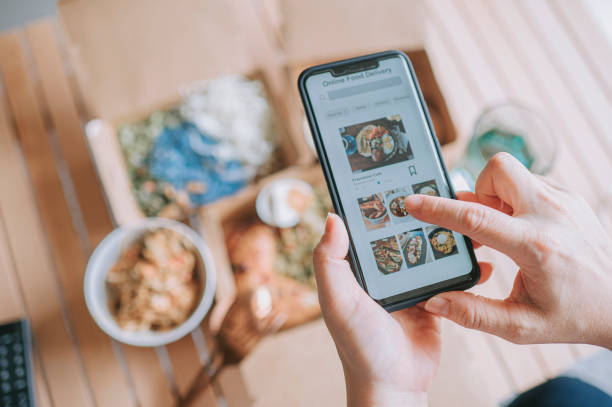 SHARE
SHARE
Still Confused? Here’s a Complete Guide to Taking Orders – The Key to Restaurant Service
Briantama Afiq Ashari
Have you ever sat in a restaurant, and a waiter came with a warm smile while jotting down your order?
That moment is actually part of the taking order process, an important procedure in restaurant service.
Many people see it as something trivial, but behind that short moment lies a strategy that can make customers happy and restaurants more trusted.
What is Taking Order?
If you’re still wondering, taking order is the process of recording customer orders carried out by the waiter or restaurant staff.
It’s not just about writing down the menu you choose but also making sure all the details are clear—like steak doneness, choice of drinks, or extra toppings you request.
From a business perspective, order taking is the foundation of the customer experience.
A single mistake can lead to disappointment. Repeated mistakes? Customers might never come back.
That’s why a basic understanding of taking orders is crucial for anyone in the F&B business.
Read also: Understanding Scale Up: The Key to Business Growth, Here's the Strategy!
Why is Taking Orders Important in Restaurants?
Think about how delighted you feel when your food arrives quickly and exactly as requested. That’s because the order-taking process ran smoothly.
It’s clear that taking order determines customer satisfaction.
On a broader scale, the role of sales taking orders is to keep the service flow organized.
It’s not just about writing, but ensuring the communication between the server and the kitchen is accurate, so food comes out as requested.
Operationally, order taking also makes the restaurant run more efficiently. Without it, chaos is inevitable.
What are the Duties of Sales Taking Orders?
Source: istockphoto
Many assume waiters only write down orders. In reality, the duties of sales taking orders go far beyond that.
They bridge customer expectations with the kitchen team. That means they must:
- Know the menu well
- Patiently answer customer questions
- Carefully avoid mistakes.
For example, if a customer is unsure about which drink to choose, the waiter can recommend one.
This shows that order taking is not just administrative but also shapes the customer experience.
The Correct Steps in Taking Orders
One frequently asked question: What’s the correct way to take orders? Here are the steps:
- Greet the customer with a smile
- Listen carefully without interrupting
- Write down the order in detail
- Repeat the order to confirm nothing was missed
- Clearly communicate the order to the kitchen.
Follow these steps, and orders will be accurate. Great service always starts with solid basics.
Tools Commonly Used in Taking Orders:
- Small notebook
- Pen
- Tablet or digital POS system (for modern restaurants).
Big restaurants often use tablets since digital systems connect orders instantly to the kitchen, reducing errors. Meanwhile, smaller cafés still rely on pen and paper.
Read Also: Don't Make the Wrong Choice! Here are Tips for Choosing a Safe, Reject-Free Online Loan
Order Taking – The Art of Connecting Customers and the Kitchen
Source: istockphoto
Why is it called an art? Because order taking requires communication skills.
Waiters must listen patiently, communicate clearly, and remain friendly—even when the restaurant is busy.
In fact, many customers return not just for the food but because they felt appreciated when placing their orders. And that all starts with good order taking.
What Happens After Taking Orders?
The job doesn’t end once the order is written. Another common question: What should be done after taking orders?
The answer:
- Ensure the order is promptly sent to the kitchen.
- Continue to check on the customer (do they need more drinks? want to add another dish?).
This follow-up interaction makes customers feel cared for, increasing the chances they’ll return.
The Importance of Training in Taking Orders
Many successful restaurants owe it to their well-trained staff.
Order-taking training is vital so staff understand it’s the backbone of service. Training can include role-playing with different types of customers—friendly, confused, or even difficult.
Once staff are familiar with these scenarios, they’ll handle real-life situations with confidence.
Digitalization Makes Taking Orders Easier
More restaurants now switch from manual notes to digital order systems. Benefits include:
- Orders sent instantly to the kitchen
- No risk of misreading handwriting
- Orders stored automatically
- Data on best-selling menu items and peak hours
- Valuable business insights for future strategy.
With digitalization, the process becomes faster, tidier, and more transparent.
FAQ – Taking Order in Restaurants
1. Why is taking order important?
Because it ensures customer satisfaction and smooth kitchen operations.
2. What tools are used?
Notebook & pen, tablet, digital POS, and ESB Order.
3. How to reduce order mistakes?
Confirm orders and use digital systems.
4. Do small restaurants need digitalization?
Not mandatory, but digital systems save time and reduce errors.
5. What’s the impact on business?
Happier customers, efficient operations, and a stronger restaurant reputation.
Conclusion
Taking orders isn’t just about writing food requests. It’s the foundation of restaurant service, shaping the customer experience from the very beginning.
If you want your restaurant to deliver faster, neater, and more professional service, digitalization is the way forward.
ESB Order is here to help. With ESB Order, you can manage dine-in, take-away, delivery, and reservations in a single system.
Contact the ESB Team today and start improving your restaurant’s service quality!
 SHARE
SHARE




